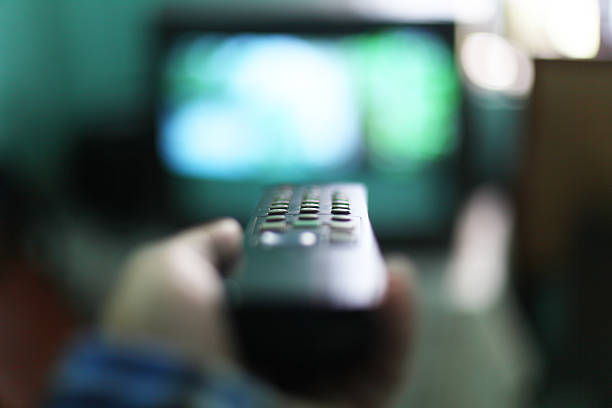The rising cost of life in general and media in particular is a pressing concern for advertisers. Yesterday the UK’s Office of National Statistics reported that inflation has reached 10.1% — the first double-digit increase in prices in 40 years.
Price inflation is not unique to TV advertising. A recent WARC report noted that prices have been rising across all major advertising channels, with paid social CPMs increasing by 33% between 2019 and 2021. But TV is such a major part of advertising that it understandably is receiving the most attention.
This is something that Thinkbox is asked a lot about. And there is a lot of context and nuance to consider that help explains what’s happening, why it’s happening, and what it means. This article aims to give some of that context.
TV demand has been stable
Advertiser demand for linear TV advertising has remained relatively stable over the last decade. In 2010, there was £4.1bn invested in linear TV advertising in the UK. In 2021, there was £4.3bn. During the intervening years it has been up a bit and down a bit (down a lot during COVID 2020). But overall, a consistent story.
What’s changed is that people are watching less linear TV
As on demand TV has become increasingly popular, linear has lost some viewing. This has constrained the supply of linear TV advertising available to advertisers. In 2010, there were 868 billion adult impacts. In 2021, there were 756 billion — that’s still a lot of impacts, but obviously fewer than before.
Strong demand + lower supply = inflation
The adult linear CPT in 2010 was £4.70. By 2019 it was £5.12 before it dropped to the very low price of £4.17 in 2020 when viewing shot up during the pandemic. But in 2021 it went up to £5.74 as viewing returned to the pre-pandemic norm. In H1 2022 it has continued to increase to £6.39.
This increase is obviously frustrating for advertisers, who have to pay more to get the same TV exposure. As Phil Smith, the director general of ISBA, recently said: “TV is unique and can’t be substituted. It sits at the heart of the media plan because it’s still very high reach and because it’s able to deliver longer ads in quality environments. The media plan for a lot of advertisers still starts with TV at its core.”
This both explains why demand for linear is still strong, but also why the constrained supply and subsequent extra cost is a pressing issue.
That said, there are some important factors that are worth taking into account when considering how linear TV’s price has changed.
The pound’s value has plummeted
The first piece of context is the value of the pound. It has been steadily declining over the last decade due to increasing retail price inflation (RPI). £1 today is worth 25% less than it was in 2010.
Taking this into account makes a big difference to the inflation story because, in real terms, adult CPTs for linear TV have been relatively stable for the last 10 years. In 2010 it was £4.70, today in real terms it is £4.78.
Why does this matter? You may be thinking that this is just a financial fudge of the data. RPI inflation and TV inflation aren’t really linked. But their relationship matters in terms of effectiveness. The ROI delivered by TV advertising is sensitive to its price. If the price of TV goes up, then ROI will naturally come down. But what if the cost of goods has also gone up? If that happens then ROI will stay the same. So what the RPI inflation-factored CPT shows us is that the price of TV has remained relatively stable versus the price of goods.
How does the UK compare globally?
Something else to consider is how the price of linear TV in the UK compares with the rest of the world. WARC’s report showed that UK TV advertising compares very favourably. TV CPMs in the US are forecast to reach $73.14 (£60.50) this year, nearly 10 times that of the UK.
BVOD is a vital part of the solution
The drop in linear viewing means advertisers should look at supplementing linear TV with broadcaster video on demand (BVOD) and online video like YouTube. For younger audiences this can mean starting with BVOD and then layering on linear TV. For 16-34 planning, BVOD and linear used together deliver cost-effective reach.
TV remains great value, despite price changes
The most important context in which to consider the cost of TV advertising is its relative value. And here there is hopefully some reassurance for advertisers.
Based on the average cost per 30 seconds, TV is still very good value compared to other forms of video. TV is almost half the price of YouTube and 18 times cheaper than the average cost for other online video like Facebook and TikTok.
And that’s before you factor in TV’s high-quality environment, its big screen viewing, its high view-through rates, the content that advertising on TV rubs shoulders with…
WARC’s report also notes something else that is becoming increasingly important: research into advertising attention suggests that not all impressions are equal. Channels with higher CPMs may deliver better-quality attention. And we know from research done to date by companies like Amplified Intelligence, TVision and Lumen that TV advertising is a very high attention performer.
***
So, while price inflation in TV advertising is an issue, there are mitigating circumstances and a broader picture to consider that help reframe the story. Ultimately, it comes down to value and whether TV continues to deliver. On the evidence we have and the demand that is out there for it, TV still does.
Source: the-media-leader.com

